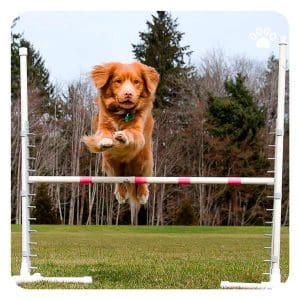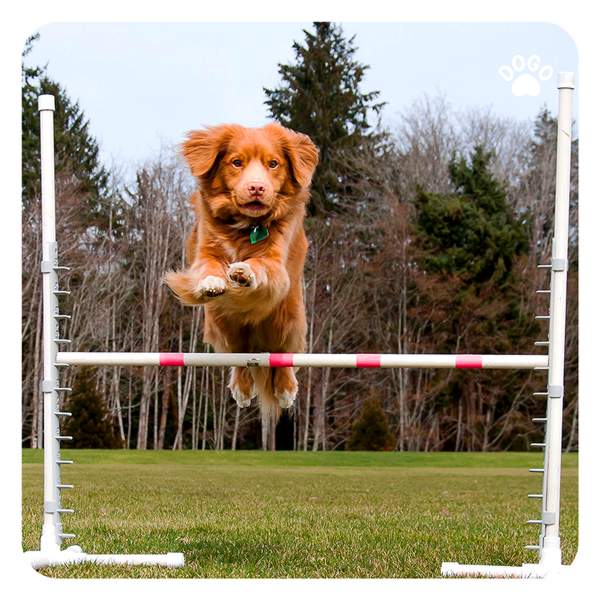 Welcoming a dog into your life can be an incredibly rewarding experience. However, one common issue many dog owners face is their pup’s tendency to jump up on people. While it’s a sign of affection, it can also be a nuisance and even a safety concern, especially when dealing with large or energetic dogs. Fortunately, with consistent training and patience, you can teach your dog not to jump. Here, we’ll explore some effective methods to address this behavior and help your furry friend become a well-mannered companion.
Welcoming a dog into your life can be an incredibly rewarding experience. However, one common issue many dog owners face is their pup’s tendency to jump up on people. While it’s a sign of affection, it can also be a nuisance and even a safety concern, especially when dealing with large or energetic dogs. Fortunately, with consistent training and patience, you can teach your dog not to jump. Here, we’ll explore some effective methods to address this behavior and help your furry friend become a well-mannered companion.
Understanding Why Dogs Jump
Before delving into training techniques, it’s crucial to understand why dogs jump in the first place. Canine behaviorists often point out that jumping is a natural instinct for dogs, often stemming from their desire to greet and show excitement. In the wild, dogs jump to greet their pack members, and this behavior can carry over into domestic settings. Moreover, jumping can be reinforced inadvertently when a dog receives attention or affection upon leaping up. In essence, they learn that jumping yields positive results. Recognizing these underlying motivations can help inform your approach to training.
Establishing Clear Communication
When it comes to training any behavior, clear communication is key. Dogs thrive on consistency and routine, so establishing a clear set of expectations is vital. Begin by setting a standard for how you want your dog to greet people. Teach your dog a specific behavior, such as sitting, to replace jumping. This not only helps to discourage jumping but also provides an alternative, more appropriate way for your dog to interact with guests. By consistently reinforcing this desired behavior, your dog will begin to understand what is expected of them when meeting new people.
Positive Reinforcement
Positive reinforcement is a powerful tool in dog training. When your dog exhibits the desired behavior, such as sitting instead of jumping, be sure to reward them with praise, treats, or affection. By associating the act of sitting with positive outcomes, your dog will be more inclined to repeat this behavior in the future. Conversely, it’s important to avoid inadvertently reinforcing jumping by giving attention or affection when your dog leaps up, as this can perpetuate the behavior. Consistency in rewarding the desired behavior will help your dog understand what is expected and encourage them to continue practicing the new greeting routine.
Consistency and Patience
Training a dog not to jump requires patience and consistency. It’s important to remember that every dog learns at their own pace, and some may require more time and repetition than others. Be patient with your furry companion and remain consistent in your training efforts. Additionally, it’s essential to communicate with family members and guests about the training process. Consistency in how people interact with your dog will help reinforce the training and prevent any setbacks in progress.
Physical and Mental Stimulation
In many cases, jumping can be a result of excess energy or excitement. Ensuring your dog receives an adequate amount of physical exercise and mental stimulation can help reduce their inclination to jump. Regular walks, playtime, and engaging activities can help channel your dog’s energy in a positive way, making them more likely to exhibit calm behavior when greeting people.
Seeking Professional Help
If you find that your dog’s jumping behavior persists despite your best efforts, seeking guidance from a professional dog trainer or behaviorist can be immensely beneficial. A professional can provide personalized guidance and tailored strategies to address your dog’s specific needs, ultimately helping you and your furry friend achieve a harmonious and well-behaved relationship.
Training a dog not to jump requires patience, understanding, and consistent effort. By recognizing the underlying reasons for jumping, establishing clear communication, utilizing positive reinforcement, and maintaining consistency, you can effectively address this behavior and foster a polite and well-mannered companion. Remember, every dog is unique, and progress may take time. With dedication and empathy, you can help your dog learn appropriate ways to greet people, ultimately enhancing the bond between you and your beloved pet.
[/fusion_text]



